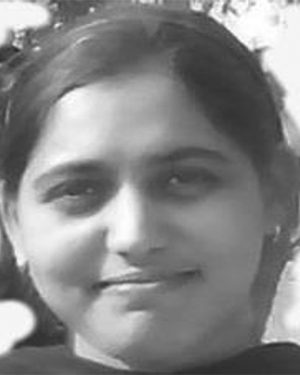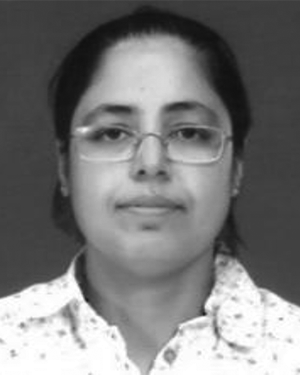Abstract:
Children with autism spectrum disorder (ASD) are characterized by deficits in social communication, partly attributed to the inability to pick up cues from social partner...Show MoreMetadata
Abstract:
Children with autism spectrum disorder (ASD) are characterized by deficits in social communication, partly attributed to the inability to pick up cues from social partners using joint attention (JA) skill. These deficits have cascading adverse effects on language acquisition and the development of cognitive skills. Therapist-mediated JA interventions are labor intensive. Robot-facilitated skill training is expensive, need specialized knowledge to operate, etc. In contrast, computer-based JA skill training platforms are affordable, offers flexibility to the designer, but lack individualization. Individualization is critical for effective skill training. To bridge this gap, we have developed virtual reality based JA task platform augmented with hierarchical prompt protocol (using eye, head turn, finger pointing, and sparkling cues). It was adaptive to individualized performance and autonomously increased level of prompting on demand. Results of a study with 20 pairs of age-matched ASD and typically developing (TD) participants indicate the potential of our system to identify JA skill deficits. Participants with ASD showed impairment in following eye cue. However, their ability to pick up finger pointing was the best, with some of them being able to pick up only the sparkling cue. However, all TD participants were able to pick up eye cue with none requiring other cues.
Published in: IEEE Transactions on Learning Technologies ( Volume: 13, Issue: 1, 01 Jan.-March 2020)

Center for Cognitive and Brain Sciences, Indian Institute of Technology Gandhinagar, Gandhinagar, India
Vishav Jyoti received the M.Tech. degree in computer science and engineering from Punjabi University Patiala, Patiala, India, in 2014. She is currently working toward the Ph.D. degree with the Indian Institute of Technology Gandhinagar, Gandhinagar, India.
Her research interests include human–computer interaction, virtual-reality, artificial intelligence, eye tracking, and physiology-based signal processing.
Vishav Jyoti received the M.Tech. degree in computer science and engineering from Punjabi University Patiala, Patiala, India, in 2014. She is currently working toward the Ph.D. degree with the Indian Institute of Technology Gandhinagar, Gandhinagar, India.
Her research interests include human–computer interaction, virtual-reality, artificial intelligence, eye tracking, and physiology-based signal processing.View more

Discipline of Electrical Engineering, Indian Institute of Technology Gandhinagar, Gandhinagar, India
Uttama Lahiri (S'11-M'12) received the Ph.D. degree in mechanical engineering from Vanderbilt University, Nashville, TN, USA, in 2011.
She is currently an Associate Professor with the Indian Institute of Technology Gandhinagar, Gandhinagar, India. Her research interests include virtual reality based human–computer interaction, eye tracking and physiology-based modeling techniques, human–robot interaction, adaptive intellig...Show More
Uttama Lahiri (S'11-M'12) received the Ph.D. degree in mechanical engineering from Vanderbilt University, Nashville, TN, USA, in 2011.
She is currently an Associate Professor with the Indian Institute of Technology Gandhinagar, Gandhinagar, India. Her research interests include virtual reality based human–computer interaction, eye tracking and physiology-based modeling techniques, human–robot interaction, adaptive intellig...View more

Center for Cognitive and Brain Sciences, Indian Institute of Technology Gandhinagar, Gandhinagar, India
Vishav Jyoti received the M.Tech. degree in computer science and engineering from Punjabi University Patiala, Patiala, India, in 2014. She is currently working toward the Ph.D. degree with the Indian Institute of Technology Gandhinagar, Gandhinagar, India.
Her research interests include human–computer interaction, virtual-reality, artificial intelligence, eye tracking, and physiology-based signal processing.
Vishav Jyoti received the M.Tech. degree in computer science and engineering from Punjabi University Patiala, Patiala, India, in 2014. She is currently working toward the Ph.D. degree with the Indian Institute of Technology Gandhinagar, Gandhinagar, India.
Her research interests include human–computer interaction, virtual-reality, artificial intelligence, eye tracking, and physiology-based signal processing.View more

Discipline of Electrical Engineering, Indian Institute of Technology Gandhinagar, Gandhinagar, India
Uttama Lahiri (S'11-M'12) received the Ph.D. degree in mechanical engineering from Vanderbilt University, Nashville, TN, USA, in 2011.
She is currently an Associate Professor with the Indian Institute of Technology Gandhinagar, Gandhinagar, India. Her research interests include virtual reality based human–computer interaction, eye tracking and physiology-based modeling techniques, human–robot interaction, adaptive intelligent techniques in cognitive research, and robot-assisted surgical techniques.
Uttama Lahiri (S'11-M'12) received the Ph.D. degree in mechanical engineering from Vanderbilt University, Nashville, TN, USA, in 2011.
She is currently an Associate Professor with the Indian Institute of Technology Gandhinagar, Gandhinagar, India. Her research interests include virtual reality based human–computer interaction, eye tracking and physiology-based modeling techniques, human–robot interaction, adaptive intelligent techniques in cognitive research, and robot-assisted surgical techniques.View more


